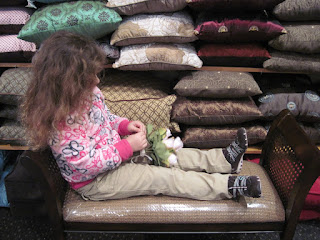 Project Summary: I am writing a 6-8 page paper about how photography can be used to raise social awareness by giving a voice to individuals that are often overlooked or marginalized, namely those that are suffering from illness. With a camera in their hands, these individuals have control over how they are being perceived; this can be very empowering for the photographers and eye-opening for their audience. Through photography those that have been left in silence are able to find meaning in their lives and, most importantly, they gain a sense of hope for the future.
Project Summary: I am writing a 6-8 page paper about how photography can be used to raise social awareness by giving a voice to individuals that are often overlooked or marginalized, namely those that are suffering from illness. With a camera in their hands, these individuals have control over how they are being perceived; this can be very empowering for the photographers and eye-opening for their audience. Through photography those that have been left in silence are able to find meaning in their lives and, most importantly, they gain a sense of hope for the future.
Outline:
• Introduction
• What is visual literacy?
• The Importance of Visual Literacy
• Applications of Visual Literacy – raising awareness, “giving voice”
• The Institute for Photographic Empowerment/ PhotoVoice
• Wendy Ewald
• “Falling Practice: What Illness Teaches Us”
• Tony Deifell
• My Client and his work
• Personal Experience - Understanding Aphasia
• Conclusion
• Direction for future work
• Introduction
• What is visual literacy?
• The Importance of Visual Literacy
• Applications of Visual Literacy – raising awareness, “giving voice”
• The Institute for Photographic Empowerment/ PhotoVoice
• Wendy Ewald
• “Falling Practice: What Illness Teaches Us”
• Tony Deifell
• My Client and his work
• Personal Experience - Understanding Aphasia
• Conclusion
• Direction for future work
 I will also be asking my client J if I can use some of the photos that he took over the course of this semester to incorporate into my project.
I will also be asking my client J if I can use some of the photos that he took over the course of this semester to incorporate into my project.Sources:
Jorgensen, Karen, and Karen Lubin. Falling Practice: What Illness Teaches Us. San Francisco:
Silent Press Books, 2005.
Silent Press Books are an indie photo-documentary publishing firm located in the San Francisco Bay Area. The beautiful images in this book chronicle Jorgensen's battle with amythropic lateral sclerosis (ALS). Much like the images that my client J has been producing, we begin to see that these individuals continue to live very full lives. Sadly, we also witness Jorgensen's slow decline as she battles with her illness. Her photos are both inspiring and unsettling; images of her limp, lifeless legs (pg. 64) contrast so starkly with the vibrancy in her eyes.
Kreisler, Harry, Letitia Carper, and Julian Bourg. "Wendy Ewald." Institute of International
Studies; UC Berkeley; 1998. Web. 12 Mar 2010.
Wendy Ewald's work was the foundation for Tony Deifell's later projects; by giving cameras to children they were able to transform their visions into beautiful works of art.
Newton, Julianne. The Burden of Visual Truth: The Role of Photojournalism in Mediating
Reality. New Jersey: Lawrence Erlbaum Associates, Inc.; 2001.
This book discusses the role of "Visual Truth" and how it influences our understanding of ourselves, others, and the world at large.
"Methodology." PhotoVoice. Web. 12 Mar 2010.
PhotoVoice seeks to promote self-development, advocacy, and a better standard of living through photography.
Photographic Empowerment; 13 November 2009. 10 Mar 2010.
(possible presentation ideas)
Video - "PhotoVoice.” Photovoice. 10 Mar 2010.
Photo Gallery – PhotoVoice (Mental Wealth) page 4 of 5
COMDIS Clinic – (http://www.youtube.com/watch?v=BnBj5GaHc6k)
http://www.youtube.com/user/UCF#p/u/24F6F0768B19F480/0/avaiaaLhzlw
UCF PROFILES (Start at 6:50 to 7:30)
Potential Source ??
Tony Deifell [official website]– (Seeing Beyond Sight) http://www.seeingbeyondsight.org/

1. Should I highlight the organizations that engage in this kind of work or individuals like Wendy
Ewald and Tony Deifell?
2. How can I tie my clients photos to the idea behind the photos I obtained from "Falling
Practice..."?
3. Should I incorporate my own personal interpretation of some of the images that I have
gathered from "Falling Practice..." as well as my clients own work?




